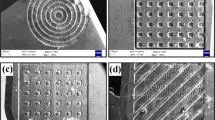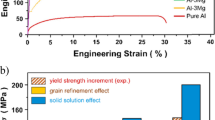Abstract
Environmentally conscious hard turning and technology have placed increasing importance on the machining process. Cutting fluids have a significant impact on the environment, thus numerous research works are being performed to minimize their use. However, tool wear is very severe in hard turning cemented carbides without the use of cutting fluids. In this research, the effects of dry and wet cutting methods (vegetable oil mist and mineral oil) and tool material on cutting resistance and wear characteristics of cutting tools were experimentally investigated to study the possibility of creating an environmentally conscious hard turning of cemented carbides. Mist and wet cutting of the cemented carbides using poly-crystalline diamond (PCD) cutting tools were adopted to investigate how tool wear on the basis of micro-cutting in the Scanning Electron Microscope (SEM) can be reduced. Additionally, the poly-crystalline cubic boron nitride (PcBN) and the usual cBN cutting tools were compared with the PCD cutting tools.
Similar content being viewed by others
References
T. Hodgson, P. H. H. Trendler and G. F. Michelletti, Turning hardened tool steels with Cubic Boron Nitride inserts, Annals of the CIRP, 30(1) (1981) 63–66.
W. A. Koenig, R. Komanduri, H. K. Toenshoff and G. Ackeshott, Machining of hard metals, Annals of the CIRP, 33(2) (1984), 417–427.
Technical Research Institute, Cutting Data Files 86-097 (edited by Japan Society for the Promotion of Machine Industry), Tokyo, Japan, (1988).
Technical Research Institute, Cutting Data Files 92-0298 (edited by Japan Society for the Promotion of Machine Industry), Tokyo, Japan, (1995).
Technical Research Institute, Cutting Data Files 95-0321, (edited by Japan Society for the Promotion of Machine Industry), Tokyo, Japan, (1997).
Technical Research Institute, Cutting Data Files 95-0323, (edited by Japan Society for the Promotion of Machine Industry), Tokyo, Japan, (1997).
Technical Research Institute, Cutting Data Files 95-0325, (edited by Japan Society for the Promotion of Machine Industry), Tokyo, Japan, (1997).
S. J. HEO, T. MIYAMOTO, S. HANASAKI, J. FUJIWARA, Study on Cutting of Cemented Carbides — Wear Mechanism of PCD Tool and Cutting Force in Turning -. J. of the Japan Society for Precision Engineering, 69(12) (2003) 1724–1728.
S. J. HEO, Micro-Cutting of Tungsten Carbides with SEM Direct Observation Method, KSME International Journal, 18(5) (2004) 770–779.
S. J. HEO, Study on Cutting Characteristics of WC-Co with Micro-Cutting in SEM, Journal of the Korean Society of Precision Engineering, 20(10) (2001) 74–81.
S. J. HEO, Micro-Cutting of Cemented Carbides with SEM, Journal of the Korean Society of Precision Engineering, 20(9) (2003) 55–62.
S. J. HEO, Machining Characteristics of Cemented Carbides in Micro Cutting within SEM, International Journal of Precision Engineering and Manufacturing, 5(3) (2004) 7.
S. J. HEO, Environmentally Conscious Hard Turning of Cemented Carbide Materials on the basis of Micro-Cutting in SEM: stressing four kinds of cemented carbides with PCD tools, J. of Mechanical Science and Technology, 22, (2008) 1383–1390.
S. UESAKA, H. SUMIYA, Mechanical Properties and Cutting Performances of High Purity Polycrystalline CBN Compact. Trans. of the ASME. J. of Manufacturing Science and Engineering, 10, (1999) 759–766.
D. CHEN, Y. SUZUKI and K. SAKAI, Study of Turning Operation by Oil-water Combined Mist Lubrication Cutting Method — Cooling Properties and Lubricating Properties -. J. of the Japan Society for Precision Engineering, 67(6) (2001) 922–926.
S. J. HEO, Hard Turning Machinability of V30 Cemented Carbide with PCD, cBN and PcBN Cutting Tool, J. of Korean Society for Precision Engineering, 25(12) 47–54.
Author information
Authors and Affiliations
Additional information
HEO Sung Jung was born in Busan, R. O. K., in 1958. He received the Ph.D. in Mechanical Engineering from Osaka University, Osaka, Japan. He is a Full Professor of Mechanical Engineering at Doowon Technical College, Ansong -si, Gyonggi-do, Republic of Korea. His current research interests are in the areas of cutting of difficult-to-cut materials, environmentally conscious machining and cutting tool design.
Rights and permissions
About this article
Cite this article
Jung, H.S. Environmentally conscious hard turning of cemented carbide materials on the basis of micro-cutting in SEM (2nd report): stress turning with three kinds of cutting tools. J Mech Sci Technol 23, 1959–1966 (2009). https://doi.org/10.1007/s12206-009-0512-3
Received:
Revised:
Accepted:
Published:
Issue Date:
DOI: https://doi.org/10.1007/s12206-009-0512-3




